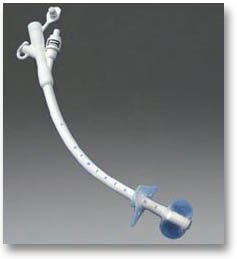

Feeding tubes are often placed in the hospital setting for patients with advanced dementia, even though there is pretty much a lack of evidence for their effectiveness in improving survival, preventing aspiration pneumonias, or helping resolve issues like pressure ulcers. One big question though is why does there seem to be so much variability in why patients with advanced dementia get feeding tubes?
A group of researchers from Brown University and Harvard Medical School looked at this question by trying to identify specific characteristics of acute care hospitals associated with greater rates of feeding tube insertion. Their study, published in this weeks JAMA, looked at over a quarter of a million hospitalizations in 163,022 previously non–tube-fed nursing home residents with advanced cognitive impairment, aged 66 years or older, who were hospitalized between 2000 and 2007. Nearly 20,000 feeding tubes were inserted. In 2007, 6.2% of hospitalized advanced cognitive impairment patients received a feeding tube.
Interestingly, the rate of feeding tube insertion varied dramatically (from 0 to 39 insertions per 100 admissions) in hospitals that admitted at least 30 nursing home residents during the study period. A select group of hospitals (12% of them) did not insert any feeding tubes. These hospitals were smaller, more likely rural, and were less likely to be affiliated with a medical school. The authors also look at each hospital’s practice patterns in the care of patients with chronic illness based on 3 measures from the Dartmouth Atlas of Health Care. They found that the hospitals that did not insert any feeding tubes accounted for 34.1% of those hospitals in the lowest decile of intensive care utilization in last 6 months of life
In the multivariable analyses, nursing home residents with advanced cognitive impairment were more likely to get a feeding tube if admitted to:
- Hospitals with greater ICU utilization for decedents with chronic illness in the last 6 months of life
- A forprofit hospital vs hospitals owned by state or local government
- Hospitals with a greater number of beds (>310 beds vs <101 beds)
Several nursing home resident characteristics were also independently associated with feeding tube use. White residents had the lowest chance of getting a feeding tube, while blacks had about a 2-fold increase in the likelihood of getting one. Patients with written advance directives, DNR orders, and orders to forgo artificial hydration and nutrition were also to get a feeding tube.
In a press release Joan Teno, the lead author stated that “Our results suggest that decisions to insert a feeding tube in persons with advanced dementia are more about which hospital you are admitted to than a decision-making process that elicits and supports patient choice.” This statement makes me think of a recent paper in the Archives of Internal medicine (reviewed by Pallimed this week) showing that whether a patient with advanced dementia gets a feeding tube may depend on the culture of the nursing home. Like it or not, it seems that location does play a very big role in why patients with advanced dementia get feeding tubes.



